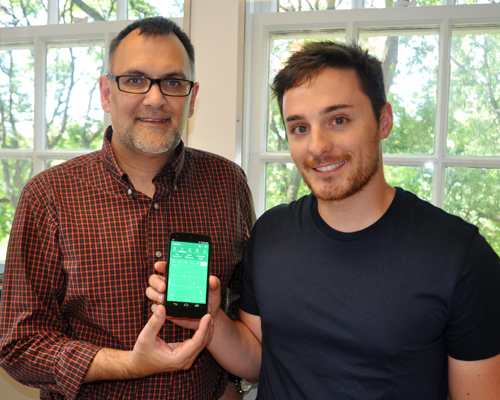
As the most common genetic disorder in North America, hemochromatosis affects one in nine people. The disorder causes the body to retain too much iron, which can build up in organs such as the liver, heart and brain. In some cases, you may have it and not even know it. But if your ferritin (a protein that binds to iron) gets too high, it can cause permanent liver damage.
That’s what happened to Prof. Gary Grewal, School of Computer Science (SOCS), who was diagnosed with hemochromatosis after feeling ill for more than a year. “I knew I wasn’t well,” he says, adding that he would often go to bed as soon as he got home from work. “I was absolutely exhausted.”
After undergoing a series of tests, including a genetic test, he was diagnosed with hemochromatosis, even though he has only one of two genetic mutations that cause people to develop the disorder.
Since then, he has worked with SOCS professor Andrew Hamilton-Wright, a colleague at Mount Allison University, and Guelph undergraduate student Andrew D’Angelo to create the Iron Tracker app (www.iron-tracker.ca) to help others with hemochromatosis.
Treatment for the disorder involves regular blood withdrawal, called a phlebotomy, to remove excess iron from the body. The app allows users to monitor their ferritin and hemoglobin levels, how much blood was drawn at their last appointment and when their next appointment is scheduled. A diagram of the human body shows which arm blood was drawn from at the last appointment.
A graph shows users how their ferritin levels fluctuate over time. Ideally, ferritin decreases after a phlebotomy. “As you input more data, you can actually see a trend, so you can see how you’re progressing toward your target,” says D’Angelo.
When ferritin begins to rise again, it’s time for another phlebotomy.
“There’s a psychological benefit to being able to see your numbers go down,” says Grewal, who used an Excel spreadsheet to keep track of his own ferritin level before he developed the app. “If your numbers go down, you will start to feel better because you’re getting iron out of your body. It was a big thing for me to see that curve go down.”
The Iron Tracker can be downloaded for free on iTunes and Google Play. So far, the app has been downloaded hundreds of times since it was launched Sept. 15.
Its popularity is due in part to word of mouth, says Hamilton-Wright, who is monitoring global downloads. When someone finds out about the app, they often tell their friends and family, which results in a surge of downloads in their country. The United Kingdom, for example, recently topped Canada for the most downloads of the app.
“At one point, our app was almost 30 per cent of the total medical apps downloaded through Google Play,” says Hamilton-Wright.
“The potential is huge,” adds Grewal. “There are 125,000 people in Canada who have hemochromatosis. Multiply that by 10 for the U.S.” He says hemochromatosis can be costly to treat if it’s not caught early; left untreated, it can lead to other health problems such as diabetes. The condition can also be fatal.
Some people started using the app when their ferritin level reached 17,000 nanograms per milliliter; more than 1,000 nanograms per milliliter is considered high. “I wouldn’t have believed that was physically possible,” says Hamilton-Wright.
“There is definitely a need for it,” adds Grewal. “The app has the potential to reach millions of people worldwide.”
D’Angelo says he had never heard of hemochromatosis but jumped at the opportunity to work on an app that could help others. “You won’t learn this in a classroom,” he says.
John Carter, a PhD student in computer science, worked on the Apple version of the app, and Frank Liu, B.Comp. ’14, designed the graphics for both the Android and Apple versions.
The Canadian Hemochromatosis Society is promoting the app on its website as well as in radio and print ads. The app has also received strong support from Hemochromatosis Australia.